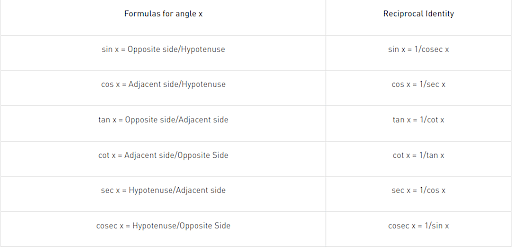\(\log ( \tan 18\degree) + \log ( \tan 36\degree) + \log ( \tan 54\degree) + \log (\tan 72\degree) =\)
- $\log 4$
- $\log 3$
- $\log 2$
- 0
The Correct Option is D
Approach Solution - 1
Approach Solution -2
Given:
\(\log(\tan 18^\circ) + \log(\tan 36^\circ) + \log(\tan 54^\circ) + \log(\tan 72^\circ)\)
Combine logarithms using the property \(\log(a) + \log(b) = \log(ab)\):
\(\log(\tan 18^\circ \cdot \tan 36^\circ \cdot \tan 54^\circ \cdot \tan 72^\circ)\)
Use tangent and cotangent identities:
\(\tan(90^\circ - x) = \cot(x)\)
Therefore, \(\tan 72^\circ = \cot 18^\circ\), \(\tan 54^\circ = \cot 36^\circ\), \(\tan 36^\circ = \cot 54^\circ\), \(\tan 18^\circ = \cot 72^\circ\)
Combine all tangents and cotangents:
\(\tan 18^\circ \cdot \tan 36^\circ \cdot \tan 54^\circ \cdot \tan 72^\circ = \tan 18^\circ \cdot \cot 18^\circ \cdot \tan 36^\circ \cdot \cot 36^\circ\)
\(= 1 \cdot 1 = 1\)
The logarithm of 1:
\(\log(1) = 0\)
So, the correct option is (D): 0
Top Questions on Trigonometric Functions
- Solve for \( x \), \[ 2 \tan^{-1} x + \sin^{-1} \left( \frac{2x}{1 + x^2} \right) = 4\sqrt{3} \]
- CBSE CLASS XII - 2025
- Mathematics
- Trigonometric Functions
- Evaluate: $ \tan^{-1} \left[ 2 \sin \left( 2 \cos^{-1} \frac{\sqrt{3}}{2} \right) \right]$
- CBSE CLASS XII - 2025
- Mathematics
- Trigonometric Functions
- The graph of a trigonometric function is as shown. Which of the following will represent the graph of its inverse?

- CBSE CLASS XII - 2025
- Mathematics
- Trigonometric Functions
- The integral \[ \int_0^\pi \frac{8x}{4\cos^2 x + \sin^2 x} \, dx \text{ is equal to:} \]
- JEE Main - 2025
- Mathematics
- Trigonometric Functions
- The value of \( \cos \left( \sin^{-1} \left(-\frac{3}{5}\right) + \sin^{-1} \left(\frac{5}{13}\right) + \sin^{-1} \left(-\frac{33}{65}\right) \right) \) is:
- JEE Main - 2025
- Mathematics
- Trigonometric Functions
Concepts Used:
Trigonometric Functions
The relationship between the sides and angles of a right-angle triangle is described by trigonometry functions, sometimes known as circular functions. These trigonometric functions derive the relationship between the angles and sides of a triangle. In trigonometry, there are three primary functions of sine (sin), cosine (cos), tangent (tan). The other three main functions can be derived from the primary functions as cotangent (cot), secant (sec), and cosecant (cosec).
Six Basic Trigonometric Functions:
- Sine Function: The ratio between the length of the opposite side of the triangle to the length of the hypotenuse of the triangle.
sin x = a/h
- Cosine Function: The ratio between the length of the adjacent side of the triangle to the length of the hypotenuse of the triangle.
cos x = b/h
- Tangent Function: The ratio between the length of the opposite side of the triangle to the adjacent side length.
tan x = a/b
Tan x can also be represented as sin x/cos x
- Secant Function: The reciprocal of the cosine function.
sec x = 1/cosx = h/b
- Cosecant Function: The reciprocal of the sine function.
cosec x = 1/sinx = h/a
- Cotangent Function: The reciprocal of the tangent function.
cot x = 1/tan x = b/a
Formulas of Trigonometric Functions:
